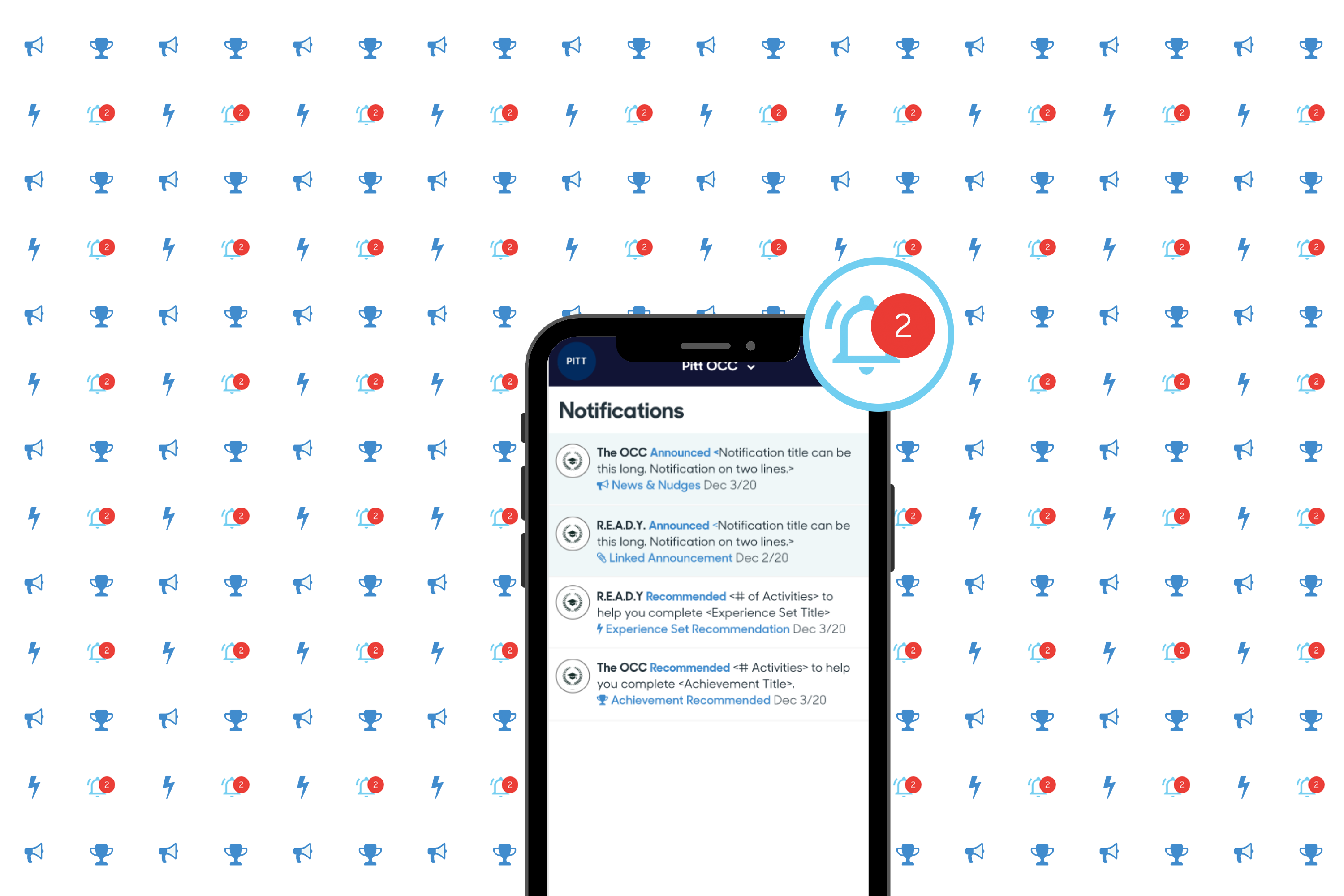.png?width=800&name=Event%20Headers%20Template%20(18).png)
Do students feel heard on campus?
It’s a complicated question. It is also a question of tremendous importance for many reasons, not least of which is that the higher education business model relies on students completing their studies.
This question is further complicated by the fact that universities are populated by seasoned educators and administrators dedicated to ensuring students not only complete college but do so in an environment that makes them feel safe, welcomed and accepted. College staff don’t just want to retain students--they want to help them achieve their academic and career aspirations.
So what is the best way to ensure students not only complete their studies but also feel heard, feel empowered to take action when they struggle and feel informed of all available resources to help them along the way?
What Students Say
A recent survey conducted by Inside Higher Ed and College Pulse spoke to 2000 students from 114 two-and-four-year colleges and universities to find out if they feel heard on campus. Here are just a few of the takeaways:
- Only 21 percent of those surveyed have even spoken up about a campus issue that was important to them, with many saying they didn’t think anyone would do anything about it.
- Over half of students surveyed (52 percent) of students feel it’s extremely or somewhat likely that a professor would help resolve concerns for them, compared to 34 percent who believe administrators would do the same.
- Half of the students surveyed are barely (32 percent) or not at all (18 percent) confident that if they had to raise an issue on campus, they would know which department could address it.
So if students have an issue in class, they know where to go--the person at the front of the classroom. But what about issues outside the classroom? Well, it turns out certain issues have a much larger impact on college retention rates than others. And dealing with these issues is often more complicated than talking to your professor after class.
What is a Stop-Out?
We have all heard of a college dropout--Kanye West even named an album after the concept. And while college is not for everyone, administrators have identified a much more pernicious problem--stop-outs.
Where a college dropout decides college is not a fit, drops out and never looks back, the phrase “stop-out” has arisen for students who delay their education for an extended period of time, often due to circumstances beyond their immediate control. It is here administrators have seen the potential for intervention before a student begins this delay or drops out entirely.
According to a recent Gallup study of 2000 students with some college credit who are not currently enrolled in school, their reasons for leaving are far more complex than simply “classes were too hard” or “I wasn’t sure about my major.”
|
Cost of attendance |
25% |
|
Emotional stress |
18% |
|
Childcare responsibilities |
13% |
|
Got a new job |
11% |
|
Health-related reasons |
10% |
|
Did not believe the degree/credential would help achieve personal goals |
10% |
|
COVID-19 |
9% |
|
Did not believe the degree/credential would help achieve career goals |
8% |
|
Courses were not relevant to future career |
7% |
|
Care for a family member or friend |
7% |
|
Completing the degree would take longer than expected |
6% |
|
Lost your job |
5% |
|
Course work was too difficult |
5% |
|
Education was low-quality |
3% |
Students checked all that apply. LUMINA-GALLUP STUDENT STUDY, SEPT 22-OCT 5, 2020
To help contend with these complicated problems and keep students on track towards their degrees, colleges and universities have begun investing in systems to prevent stop-outs by addressing warning signs before students make the decision to suspend their education.
What Is An Early Alert & Intervention System?
To address the problem of stop-outs and improve retention rates, colleges and universities will put in place a process of proactive and intentional outreach to at-risk students to diagnose persistence roadblocks, solve problems and set goals, creating a positive plan for ongoing success.
To do this, they must first identify at-risk students. So what constitutes an at-risk student? For most universities, an at-risk student can be classified as one who is not meeting the necessary predictive criteria for a desired outcome. Those desired outcomes can be graduation, achieving necessary skill competencies, meeting the requirements of a major or honors program, etc.
What Early Alert & Intervention Systems allow schools to do is identify risk factors before they begin to impact student outcomes. This way, the school can proactively intervene with helpful tips and resources to keep students on the right path.
How Does An Early Alert & Intervention System Work?
In its most rudimentary form, alert systems operate more like a list of procedures schools follow in order to let students know they are falling short of expectations and inviting them to turn things around. These types of alerts have come in many forms--from letters sent through the mail to email to more modern digital communications.
Modern Early Alert & Intervention systems automate the process. Schools collect multiple data points that indicate a student’s progress and if the student shows certain agreed-upon warning signs within their progress data, a certain kind of alert is sent.
Types of Early Alerts
There are many reasons students may fall behind. Increasing communication helps you find out what those reasons are
Financial issues are one of the most common causes for stop-outs. Intervening with financial aid resources can prevent this.
Child care and other familial issues are common reasons students don’t graduate. Intervening with assistance (extra time for assignments, campus child care resources) can help.
First-Generation students are of greater risk of not finishing so if you see first-generation students falling behind, communicating with them and offering resources to make them feel more comfortable on campus can help.
What An Early Alert & Intervention System Is Not
While Early Alert & Intervention Systems can help address some fundamental student issues and improve retention rates, they are not silver bullets to very complex problems.
In order to address this, it is important to discuss what early alert and intervention systems will not help you with.
Academic Probation
Early Intervention IS NOT Academic Probation. Academic Probation is a type of disciplinary action that takes place if a student is falling behind in terms of their curricular obligations and grades.

In many ways, early intervention programs are designed to keep students from reaching educational setbacks like academic probation. By the time many students reach the point of being on probation, it may already be too late.
According to multiple studies on the subject, Academic Probation:
- Has a negative impact on retention
- Has a negative impact on graduation rates
- Often causes students to change their major, which has been shown to impact retention as well
- Doesn’t necessarily come with any resources--in many cases, it is simply a designation.
First-Generation Programs
Many first-generation students come to campus with challenges that administrators have identified and started to keep an eye out for in the event that intervention is necessary. And Early Alert & Intervention Systems can help identify students who may require resources.
But universities that proactively address the needs of first-generation students may be able to avoid these interventions altogether.
For example, our partners at Northern Arizona University have built first-generation student programming into things like their orientation procedures, so students can join groups, identify resources and avoid the pitfalls of being the first in your family to attend college.
Retention Resources
As mentioned above, the most common issues students face that cause them to delay or end their education happens outside the classroom and, oftentimes, outside the campus.
In order to tackle them, schools need robust plans in place to help students handle financial struggles, childcare issues, mental health resources and more.
So how can schools be sure they are ready?
By collecting data on both curricular and co-curricular activities, schools can access a broader data set, analyze a broader set of student decisions and better identify intervention points and recommendations that can be personalized to the student by their advisor.
This way, not only are schools intervening, but they are making timely, relevant, helpful recommendations that the school can deliver on and the student can take an active role in.
What Should Schools Look For?
Modern Communication
The average college student receives over 400 emails from their college per semester. On top of that, most emails sent by schools look official or urgent, but may not be as serious to the student as they seem.
While students spend more time looking at their phones than nearly anywhere else, frivolous emails (or emails thought to be frivolous) are the first things to get ignored when a student is struggling.
Email messages are easily lost in the shuffle and if a student is struggling to keep up, there is even less of a chance those types of messages will break through.
Suitable uses Push Notifications for student communication. These messages arrive right on the phone’s desktop and in the notification center so they stand out from the noise. All pertinent information is delivered right away, without the student having to search for it. With this level of communication, students are far more likely to get the message that advisors are concerned and would like to meet to address issues that may be causing the student to fall behind.
The last thing any retention specialist wants is for students to fall further behind because the missed an email.
Smart use of data to identify those that are struggling
Suitable allows you to have a look at the whole student, combining curricular and co-curricular data to see if a student is struggling everywhere or just inside the classroom--a critical distinction.
Creating and refining thresholds for when a student needs intervention is an important step. Continued data collection before and after intervention will help set baselines for success and understand if different timings or thresholds are needed.
This process also requires schools to identify different thresholds for different types of struggles. Should you recommend the student attend more office hours with their professor or should you recommend a new financial aid package? Knowing this before meeting with a student can ensure that your intervention is more successful. This requires a robust data set that helps you recognize the needs of the whole student.
Finally, you must ensure that the resources you are offering to your students are sufficient. While these alert management systems provide useful automation, helping advisors know when to set meetings with struggling students and reach them with modern communication tools, helping students overcome these big challenges remain very human challenges best handled by caring, dedicated administrators.
In the Inside Higher Ed and College Pulse study we referenced earlier, majorities of students claimed that they would not know where on campus to go to solve a problem, and wouldn’t trust an administrator to handle it if they did.
While retention is crucial to the bottom line of any college or university, ensuring student success is why people who work at colleges and universities got into this work. Solving the problems of trust and awareness of resources should be the first job any university looks to solve.
Our partners who have addressed these issues head-on have used Suitable’s Early Alert & Intervention tools as starting points to a larger conversation about first-generation programming, empowering professors in co-curricular environments, addressing financial aid concerns and more.
To learn more about how our partners sparked these conversations, request a demo with one of our team members today.



